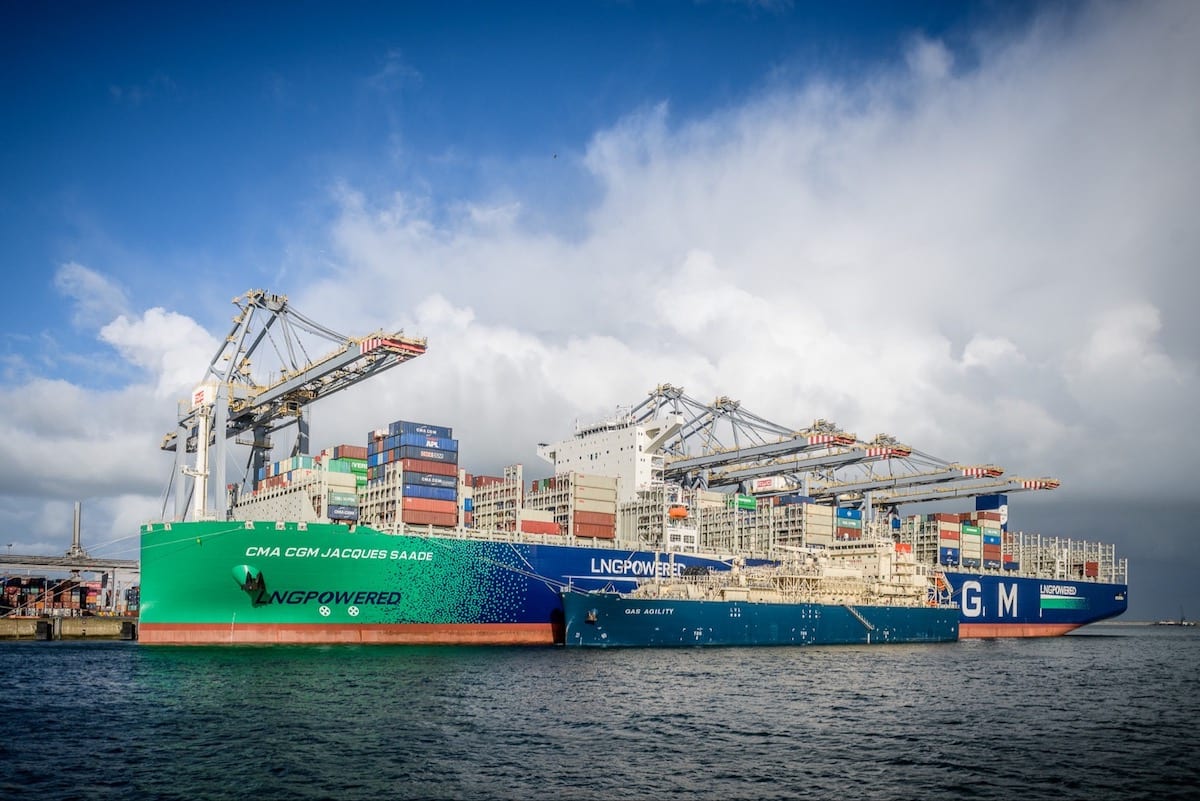Marstal Maersk leaves DSME on 7 April, image courtesy Chris Doremus
By Gavin van Marle
There is absolutely no sign that the overcapacity in container shipping is going to improve any time soon, according to a leading industry analyst – and given that increased economies of scale appear to be carriers’ main strategy for improving profitability, it could even get worse over the next few years.
In one of the bleakest assessments of the global box trades in recent times, Alphaliner executive partner Tan Hua Joo argued at this week’s TOC Container Supply China event in Singapore that Maersk’s order for 20 Triple-E vessels in 2011 was the beginning of a capacity “arms race” that is fast becoming the very definition of a zero sum game.
The newbuild order came during a lull in a bitter rate war that had developed after the false restocking recovery of 2010,
Mr Tan said: “Maersk miscalculated that it could push some of its competitors out of the way, but eventually it was forced to form the P3 alliance – taking that step indicated there was something wrong.
“But the independents aren’t giving up either, and the ‘arms race’ triggered by the Triple-E orders is getting worse. The number of new ships is quite a scary picture, and next year it is going to get even uglier,” he added.
The P3 members will take on significant new capacity as Maersk accepts delivery of the remaining 16 Triple-E vessels and MSC and CMA CGM take delivery of their new ultra large container vessels (ULCVs). Meanwhile, over the course of this year, the G6 members will be coming to the end of their new building programmes.
In 2015 and 2016, there is a large tranche of vessels of over 9,000teu due to be delivered, and Mr Tan questioned whether Maersk’s previous insistence that it would not need to place any orders for a number of years following the Triple-E deliveries would remain.
“How will Maersk react to their competitors getting all this new tonnage?” he asked. “At some point it will ‘pull the trigger’ again.
“One of its reasons for forming the P3 was to try to keep its two major competitors in check, but they have since placed further orders – so one of the interesting aspects is going to be how the intra-alliance competition between members develops over the next couple of years.”
And Mr Tan went as far as to suggest that competition would not be so much about three or four major groupings, but about “19 carriers competing”.
Nonetheless, the changing nature of alliance calculations would continue to the defining feature, he argued.
“The CKYH alliance will be in a much stronger position with Evergreen, and there is still a question about what is going to happen to China Shipping and UASC, which both have large newbuilding programmes.
“Meanwhile, the G6 doesn’t have much capacity coming after 2014, and it is clear that the Japanese carriers will have to do something because their fleets are in need of renewal and they will have to invest in new capacity to remain competitive,” he said.
The upshot, said Mr Tan, is that “rate volatility is likely to persist indefinitely”, with capacity currently growing at 7-8% against a trade growth substantially below that.
“The new capacity won’t be soaked up – it is still a supply-demand growth ratio of 3:1, and this is happening in a context where there is already a significant existing overhang.”
The typical economic answer to such an imbalance would be corporate consolidation, and while there has much recent talk of a new round of industry merger activity, Mr Tan reserved particular scorn for this.
“I just don’t see it happening: If Hapag-Lloyd takes over CSAV it is a very negative move for the Germans. It will be more harmful than if they remained independent.”
Similarly, he said, talk of a Cosco-China Shipping merger following their partnership announcement, was he said just “lip service”.
Neither did he see the prospect of smaller carriers exiting the Asia-Europe trade, despite almost uniformly posting abject losses last year, largely as a result of the freight rate weakness on this, the largest of the east-west trades.
“Hanjin and Hyundai both suffered heavy losses, and although they have been selling the family silver to stem these, there is no sign of them exiting box shipping.
“Similarly, I don’t see Zim being allowed to go out of the market – instead their creditors and the Offer family are paying the price.
“Perhaps the most interesting possible marriage is APL and OOCL. With the market as it is, they will soon start running out of ideas and would make very good merger candidates, although it will probably have to be forced upon them.
“The big question is how Maersk will react to all this?” he said.
Unlock Exclusive Insights Today!
Join the gCaptain Club for curated content, insider opinions, and vibrant community discussions.

 Join The Club
Join The Club













